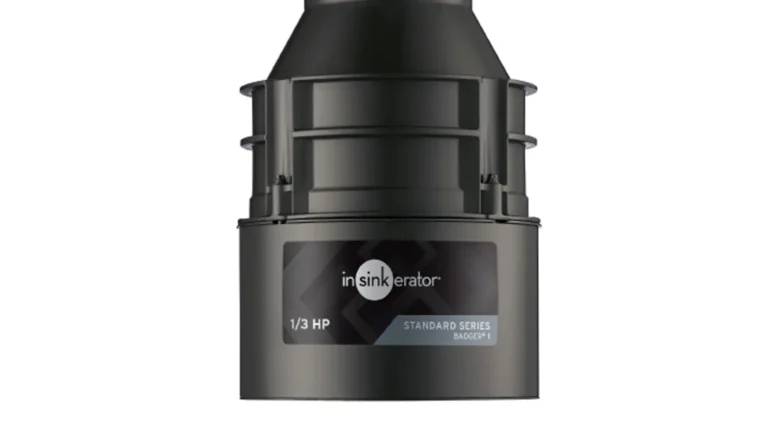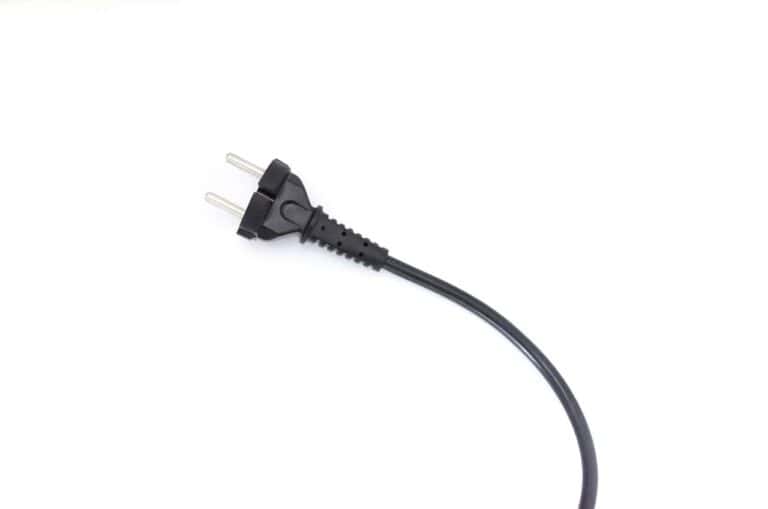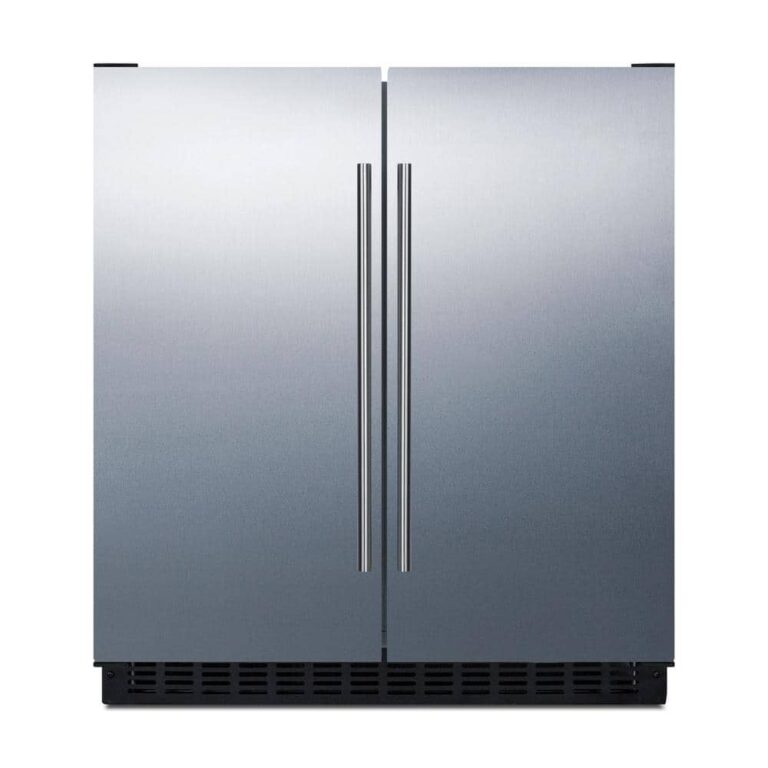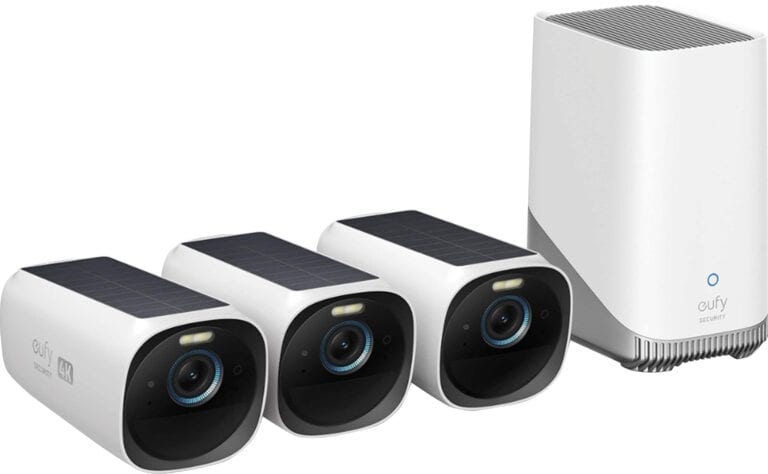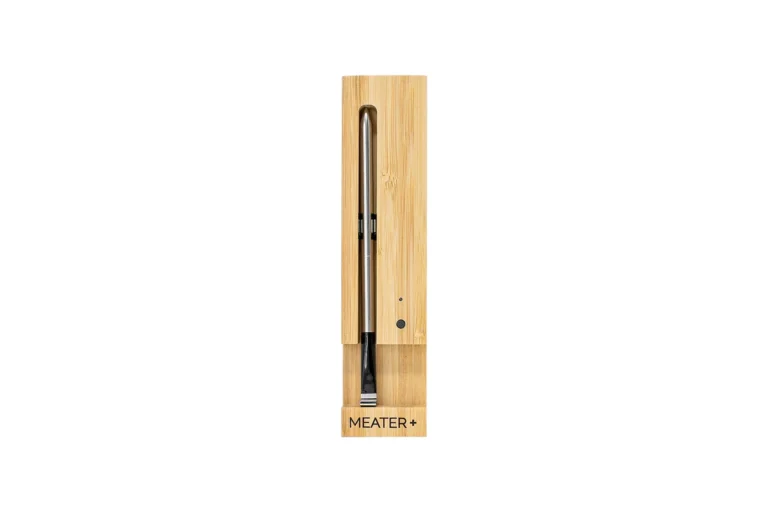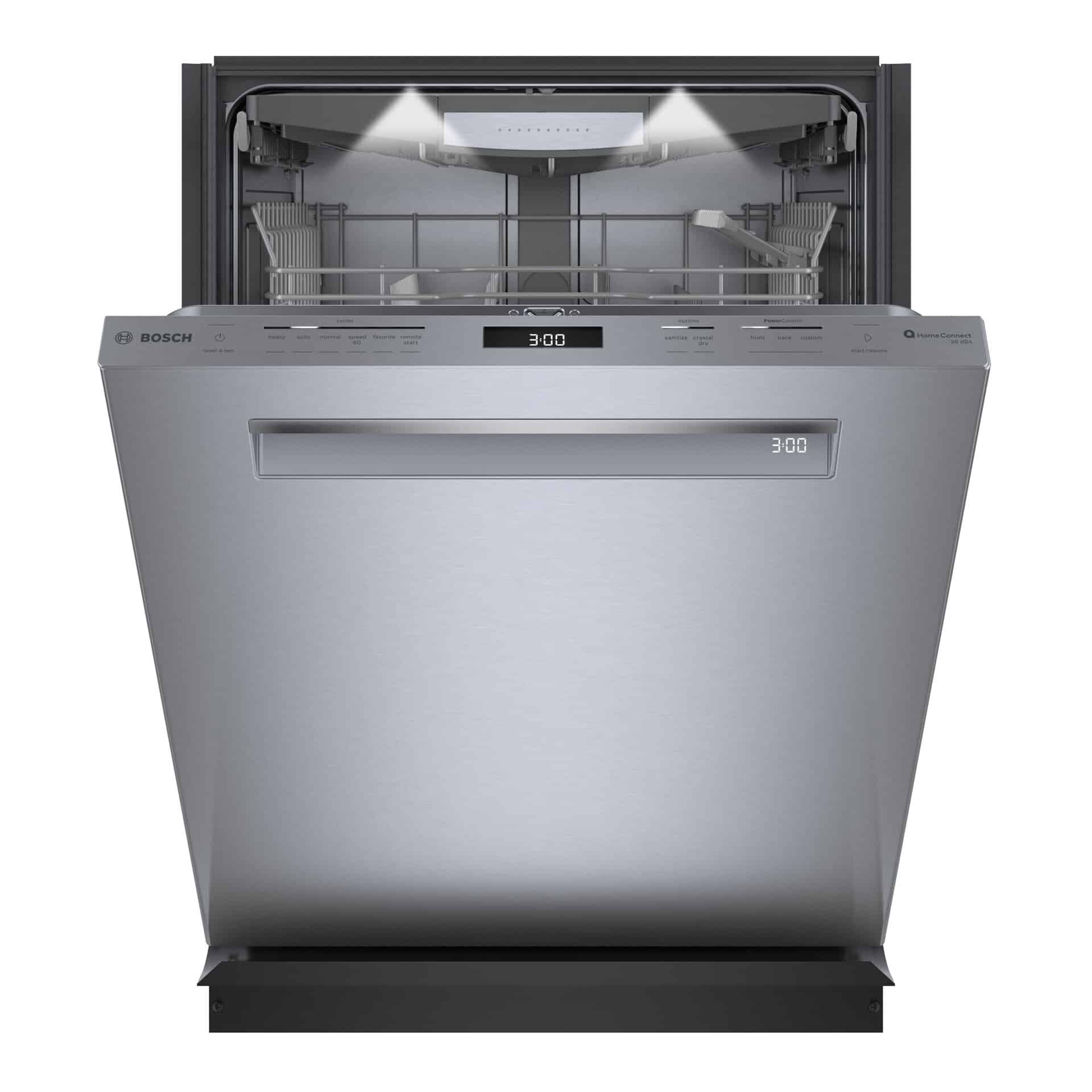
A clogged Bosch dishwasher can disrupt kitchen efficiency. This issue often manifests as standing water at the bottom of the appliance or poor cleaning performance. To unclog a Bosch dishwasher, start by checking and cleaning the filter, which is located at the bottom of the tub.
The filter is a common culprit for clogs, trapping food particles and debris. Regular maintenance can prevent most clogs. If cleaning the filter doesn’t solve the problem, inspect the drain hose for kinks or blockages. A clogged drain hose can impede water flow and cause drainage issues.
For persistent clogs, the drain pump may need attention. This component pushes water out of the dishwasher. Accessing and cleaning the pump can resolve stubborn drainage problems. Always unplug the dishwasher before attempting any repairs.
Troubleshooting a Clogged Bosch Dishwasher
A clogged Bosch dishwasher can be a real headache. If your dishwasher isn’t draining properly or you notice water pooling at the bottom, it’s time to investigate. Here’s a step-by-step guide to help you unclog your Bosch dishwasher:
1. Safety First
- Turn off the power: Before you start, disconnect the dishwasher from the power source by either unplugging it or switching off the circuit breaker.
- Wear gloves: Protect your hands from sharp objects or food debris.
2. Check and Clean the Filter
The filter is the first place to check for clogs. It’s located at the bottom of the dishwasher, usually under the lower spray arm.
- Remove the filter: Consult your dishwasher’s manual for specific instructions, but generally, you can twist and lift the filter assembly to remove it.
- Disassemble and clean: Separate the filter components (there are usually two or three). Rinse them thoroughly under running water, using a brush to remove any food particles or debris.
- Reassemble and reinstall: Put the filter components back together and reinsert the filter assembly into the dishwasher.
3. Inspect the Drain Pump
If the filter is clean but the problem persists, the drain pump might be clogged. It’s located beneath the filter.
- Remove the pump cover: Refer to your manual for instructions. You might need to remove a few screws or clips.
- Check for debris: Carefully remove any food particles, broken glass, or other debris that may be obstructing the pump impeller (the spinning part).
- Clean the pump: Use a sponge or cloth to wipe away any gunk.
- Reinstall the pump cover: Securely reattach the cover.
4. Clear the Drain Hose
The drain hose connects the dishwasher to your sink drain or garbage disposal. It can sometimes become clogged.
- Detach the drain hose: Locate where the drain hose connects under your sink. Carefully detach it, placing a bucket underneath to catch any water.
- Check for clogs: Inspect the hose for any blockages. You can use a long, flexible brush or a plumbing snake to clear any obstructions.
- Flush the hose: Run water through the hose to ensure it’s clear.
- Reattach the hose: Securely reconnect the drain hose to the sink drain or garbage disposal.
5. Check the Air Gap (if applicable)
If your dishwasher has an air gap (a small cylindrical device on your sink), it can also become clogged.
- Remove the cap: Unscrew the cap of the air gap.
- Clean the components: Remove any debris from the air gap and clean the components.
- Reassemble: Put the cap back on the air gap.
6. Run a Test Cycle
After cleaning these components, run a short cycle with the dishwasher empty to check if the clog has been cleared.
If the Problem Persists
If you’ve tried these steps and your Bosch dishwasher is still clogged, it’s best to contact a qualified appliance repair technician. There may be a more complex issue that requires professional attention.
Preventing Dishwasher Clogs
Here are some tips to help prevent future clogs:
- Scrape food scraps: Before loading dishes, scrape off any large food particles into the trash.
- Rinse dishes: A quick rinse can help remove excess food that can clog the filter.
- Use a garbage disposal: If you have a garbage disposal, run it before starting the dishwasher to help clear any food debris from the drain lines.
- Clean the filter regularly: Clean the filter at least once a month to prevent buildup.
- Run a cleaning cycle: Use a dishwasher cleaner periodically to remove grease and grime.
By following these tips and performing regular maintenance, you can keep your Bosch dishwasher running smoothly and avoid frustrating clogs.
Key Takeaways
- Check and clean the dishwasher filter as the first step in unclogging
- Inspect the drain hose for kinks or blockages that impede water flow
- Clean the drain pump for persistent clogs after unplugging the appliance
Preparation and Safety Measures
Before attempting to unclog a Bosch dishwasher, it’s crucial to take proper safety precautions and gather the necessary tools. This ensures a safe and effective repair process.
Checking the Power Supply
Disconnect the Bosch dishwasher from the power source before starting any work. Unplug the appliance from the electrical outlet or switch off the circuit breaker at the main electrical panel. This step prevents the risk of electric shock during the unclogging process.
Test the power outlet with a voltage tester to confirm there’s no electricity flowing. If the dishwasher is hardwired, turn off the dedicated circuit breaker and use the voltage tester on the dishwasher’s wiring to ensure it’s not live.
Gathering Necessary Tools
Collect the tools needed for unclogging the Bosch dishwasher:
- Screwdriver set (flathead and Phillips)
- Pliers
- Flashlight
- Towels or rags
- Bucket
- Rubber gloves
- Cleaning brush or toothbrush
- Vinegar or baking soda (for cleaning)
Have a user manual handy for reference. If unavailable, download a digital copy from Bosch’s website. Keep a notepad to jot down the steps taken or parts removed during the process.
Ensure good lighting in the work area. Use a headlamp if needed for better visibility inside the dishwasher. Place towels on the floor to catch any water spills during the unclogging process.
Troubleshooting Common Clog Locations
Identifying and addressing clog sources in a Bosch dishwasher can resolve drainage issues. Several key areas often accumulate debris and require inspection.
Inspecting the Drain Hose
The drain hose is a critical component for proper dishwasher drainage. Check for kinks or bends that may restrict water flow. Straighten any twisted sections to allow smooth passage.
Disconnect the hose from both the dishwasher and sink or garbage disposal. Flush it with water to remove blockages. Use a flexible brush to dislodge stubborn debris if needed.
Ensure the hose is properly connected and sealed at both ends. Replace damaged or cracked hoses to prevent leaks and drainage problems.
Examining the Spray Arms
Spray arms distribute water throughout the dishwasher. Inspect the holes for food particles or mineral deposits that may obstruct water flow.
Remove the spray arms following the manufacturer’s instructions. Soak them in warm, soapy water to loosen debris. Use a toothpick or thin wire to clear individual holes.
Rinse the spray arms thoroughly before reinstalling. Ensure they rotate freely without obstruction. Clean spray arms improve water circulation and cleaning performance.
Assessing the Dishwasher Filter
The filter system traps food particles and prevents them from recirculating. Locate the filter assembly at the bottom of the dishwasher tub.
Remove the filters carefully. Most Bosch models have a fine mesh filter and a coarse filter. Rinse them under warm water to remove loose debris.
Use a soft brush to gently scrub away stuck-on particles. For stubborn buildup, soak filters in warm, soapy water. Rinse thoroughly and reinstall, ensuring proper placement.
Clean filters regularly to maintain optimal dishwasher performance and prevent clogs.
Checking for Foreign Objects
Small items can fall unnoticed into the dishwasher, causing blockages. Inspect the bottom of the tub for lost utensils, bottle caps, or broken glass.
Remove the lower rack for better access. Check around the drain area and pump cover for trapped objects. Use caution when removing sharp items.
Look for pieces of labels or plastic wrap that may have come loose during washing. These can easily clog the drain or pump.
Clear any debris found to prevent future drainage issues and ensure proper dishwasher operation.
Advanced Clog Removal Techniques
When standard cleaning methods fail, more intensive approaches can effectively clear stubborn clogs in Bosch dishwashers. These techniques target tough blockages using common household items and specialized tools.
Using Vinegar and Baking Soda
White vinegar and baking soda create a powerful cleaning combination for dishwasher clogs. Users should remove the dishwasher’s filter and spray arms before starting. Pour 1 cup of baking soda into the bottom of the empty dishwasher. Next, add 1 cup of white vinegar.
The mixture will fizz and bubble, helping to break down grease and food particles. Let it sit for 15 minutes. Run a hot water cycle to flush out the loosened debris.
For persistent clogs, repeat this process. It’s important to avoid using bleach, as it can damage rubber seals and gaskets in Bosch dishwashers.
Employing a Plunger
A plunger can dislodge stubborn clogs in the dishwasher’s drain. First, remove standing water from the dishwasher bottom. Place the plunger over the drain opening, ensuring a tight seal.
Plunge vigorously for 30 seconds. Repeat this action several times. The suction created can help break up and remove blockages.
After plunging, run a rinse cycle to check if the clog has cleared. If water drains properly, the technique was successful. For safety, unplug the dishwasher before using this method.
Maintenance and Prevention
Regular maintenance and preventive measures can significantly reduce the likelihood of clogs in Bosch dishwashers. Proper loading, routine cleaning, and water treatment play crucial roles in keeping the appliance running smoothly.
Loading the Dishwasher Properly
Correct loading practices prevent food particles from blocking the drain system. Scrape off excess food from dishes before placing them in the dishwasher. Avoid overcrowding, as this can impede water flow and proper cleaning.
Position large items like pots and pans at the sides and back of the lower rack. This prevents them from blocking the spray arms. Place cups, glasses, and bowls at an angle on the upper rack to allow water to drain effectively.
Utensils should be placed in the designated basket with handles down, except for knives. This ensures thorough cleaning and prevents food from getting trapped.
Regular Cleaning and Care
Maintaining a clean dishwasher is essential for preventing clogs. Clean the dishwasher filter monthly or more frequently if used heavily. Remove the filter and rinse it under running water to remove debris.
Wipe down the door seals and edges with a damp cloth to prevent buildup. Run an empty cycle with a dishwasher cleaner or white vinegar every month to remove mineral deposits and grease.
Check and clean the spray arms regularly. Remove any food particles or mineral buildup from the holes to ensure proper water distribution.
Using Water Softeners
Hard water can leave mineral deposits in the dishwasher, leading to clogs and reduced efficiency. A water softener can help prevent these issues.
Install a whole-house water softener system or use dishwasher-specific water softening products. These products reduce limescale buildup in the appliance.
Adjust the salt level in the built-in water softener of Bosch dishwashers according to local water hardness. This helps maintain optimal performance and prevents mineral-related clogs.
Use rinse aid in every wash cycle. It helps water sheet off dishes and components, reducing the chance of mineral deposits forming.
Frequently Asked Questions
Bosch dishwasher owners often encounter drainage issues. These common questions address filter cleaning, potential causes of drainage problems, pump testing, reset procedures, and troubleshooting techniques.
What steps are involved in cleaning the filter of a Bosch dishwasher?
To clean the filter of a Bosch dishwasher, first remove it from the bottom of the appliance. Check the owner’s manual for specific instructions on filter removal.
Rinse the filter under running water to remove debris. Use a soft brush and mild soap to clean stubborn residue.
Inspect the filter for damage before reinstalling it securely in the dishwasher.
What could be the reasons for a Bosch dishwasher to not drain despite no visible blockage?
A Bosch dishwasher may fail to drain due to several reasons. The drain hose might be kinked or improperly installed.
The air gap, if present, could be clogged. The drain pump might be malfunctioning or obstructed by small objects.
A faulty control board can also prevent proper drainage cycles from initiating.
How do you perform a drain pump test on a Bosch dishwasher?
To test the drain pump, first unplug the dishwasher and remove the bottom panel. Locate the pump and disconnect its electrical connections.
Use a multimeter to check for continuity across the pump terminals. If there’s no continuity, the pump likely needs replacement.
Reconnect everything if the pump passes the test, as the issue may lie elsewhere.
Is there a reset protocol for a Bosch dishwasher experiencing drainage issues?
Yes, Bosch dishwashers can be reset to potentially resolve drainage problems. Press and hold the start button for about 3-5 seconds.
This action cancels the current cycle and drains any standing water. After the reset, run an empty cycle to check if the issue persists.
If problems continue, a more thorough inspection or professional service may be necessary.
What are common troubleshooting practices for a Bosch dishwasher’s drain pump malfunction?
Check for foreign objects blocking the pump impeller. Remove the pump cover and manually rotate the impeller to ensure it moves freely.
Listen for unusual noises when the pump operates, which may indicate internal damage. Inspect electrical connections for signs of corrosion or looseness.
Replace the pump if these steps don’t resolve the issue.
Why might there be standing water in the bottom of my Bosch dishwasher?
Standing water in a Bosch dishwasher often indicates a drainage problem. The filter might be clogged with food particles or debris.
The drain hose could be kinked or improperly installed, preventing water from exiting. A faulty drain pump or a clogged garbage disposal connection can also cause water retention.
Regular maintenance and proper loading practices help prevent these issues.

